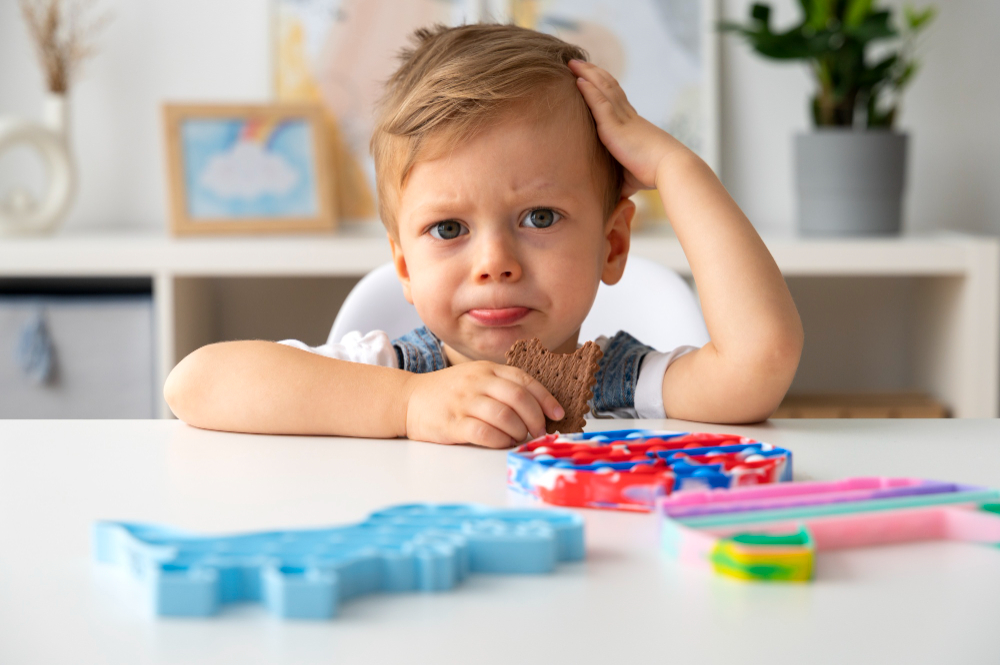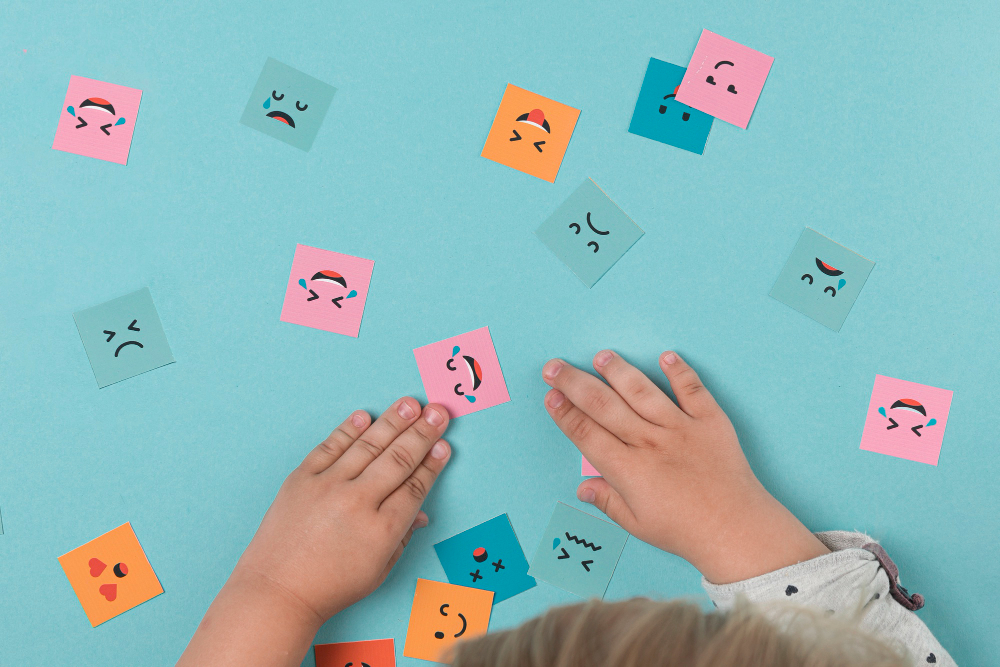Ever wonder what’s truly going on inside that busy little mind of your toddler? One moment they’re giggling with pure delight, the next they’re in a full-blown tantrum over a misplaced toy. It’s a whirlwind, isn’t it? As parents, we often focus on physical milestones like first steps or words, but the equally vital journey of emotional development in these early years is just as fascinating and crucial. Between the ages of one and three, your child is undergoing an incredible transformation, not just physically, but emotionally and socially. Understanding these shifts can empower you to navigate the ups and downs with confidence, fostering a strong foundation for their future well-being. This post will guide you through what to expect and how to lovingly support your little one’s burgeoning emotional world.
Table of Contents
The Wonderful World of Toddler Emotional Development
Toddlerhood is a period of immense growth, where children begin to explore and express a wide range of feelings, engage with others, and strive for greater independence. These emerging social and emotional skills are not just cute quirks; they are fundamental building blocks for future success in school and life. Think about it: learning to try new things, solving problems, and getting along with peers are all rooted in a child’s developing emotional intelligence. Caregivers play a crucial role in facilitating this emotional growth, providing the support and environment needed for children to thrive.
Understanding Emotional Milestones: Ages 1-2
Between their first and second birthdays, toddlers are like sponges, soaking up everything around them. This is a time when they are truly learning how to express themselves, and sometimes, that expression comes in the form of an outburst of laughter, and other times, a full-blown temper tantrum. It’s a normal part of their emotional development as they grapple with big feelings they don’t yet have the words for.
You’ll also notice a growing sense of independence. Your little one will become more adventurous, eager to explore their surroundings on their own. While they might wander a bit further, they’ll often check back to make sure you’re still nearby, using you as a secure base for their explorations. This burgeoning independence is a key step in their social and emotional growth.

How You Can Help:
- Give them words for feelings: Help your toddler connect their feelings to words. For instance, if they’re crying because playtime is over, you might say, “You’re angry that playtime is finished.” Or if Grandma is leaving, “You’re sad Grandma is going.” This helps them build their emotional vocabulary.
- Model emotions: Talk about your own feelings in simple terms. “I’m happy the sun is shining today!” or “I’m a little frustrated because this puzzle piece won’t fit.” This teaches them how to identify and express emotions in a healthy way.
- Encourage safe exploration: Allow them to explore new toys or environments safely. Praise their efforts, even if they don’t succeed immediately. “You kept trying to figure out that toy, and you did it!” This builds their confidence and fosters a sense of accomplishment.
Nurturing Social Skills: Ages 2-3
As your child moves from two to three years old, their independence continues to blossom. You’ll observe a significant shift in their play, moving from parallel play (sitting next to another child but playing independently) to more interactive, back-and-forth play with peers. This is a crucial time for developing social skills like sharing and taking turns. They are also beginning to understand the meaning of words like “no,” “mine,” and “I will do it!” which can sometimes lead to more frequent tantrums as they assert their newfound autonomy.
How You Can Help:
- Teach turn-taking and sharing: Facilitate opportunities for your child to play with others and gently guide them in sharing toys and taking turns. You can narrate what you see: “Liza is looking at your cars. Do you think she wants a turn?”
- Offer choices: To head off tantrums and give your child a sense of control, offer appropriate choices. “Would you like to put on your pajamas first or brush your teeth?” This validates their desire for independence while still guiding them.
- Use a feeling chart: Since words are becoming more meaningful, a feeling chart can be a great visual aid to help your toddler name what they are feeling. This empowers them to communicate their emotions more effectively than through screams or meltdowns.
- Model calm behavior: When your child is having a tantrum, it’s easy to get swept up in the emotion. Take a deep breath and model how to interact with others and express emotions in a safe way. Your calm response can help them regulate their own big feelings.
Practical Tips for Supporting Your Child’s Emotional Development
Beyond age-specific milestones, several overarching strategies can significantly support your child’s emotional development throughout their toddler years and beyond. These practices foster a secure environment where your child feels safe to explore, express, and ultimately manage their emotions.
- Create a Safe and Consistent Environment: A predictable and secure environment is the launchpad for healthy emotional growth. When children know they can rely on you to be there for them, they are more likely to take the necessary risks for development, like exploring new things or trying to solve problems independently. This consistency helps them feel secure and understood.
- Model Emotional Regulation: Children learn by observing. Your reactions to stress, frustration, or joy provide a powerful example for your child. By openly and calmly expressing your own emotions, you teach them healthy ways to cope. For instance, if you’re feeling overwhelmed, you might say, “Mommy is feeling a little frustrated right now, so I’m going to take a deep breath.” This shows them that it’s okay to have big feelings and that there are strategies to manage them.
- Validate Their Feelings: Even if the reason for their upset seems trivial to you, acknowledge and validate your child’s emotions. Saying something like, “I see you’re very angry that your tower fell down,” helps them feel heard and understood. This doesn’t mean you condone negative behavior, but rather that you acknowledge their internal experience. Validation is key to building both self-confidence and a healthy response to emotion.
- Provide Positive Reinforcement: Celebrate your child’s efforts to express themselves using words or actions instead of screams or meltdowns. When they successfully use a word to communicate their feelings, praise them! This encourages them to continue building their self-confidence and emotional vocabulary.
- Have Realistic Expectations: It’s important to remember that emotional development is a journey, not a race. There will be days filled with progress and days filled with challenges. Two-year-olds will have tantrums; it’s a normal part of their development. Expecting too much can lead to frustration for both you and your child. Instead, focus on guiding them through each stage with patience and understanding.
For more in-depth information on supporting your toddler’s social and emotional growth, you can explore resources from the Michigan Department of Education and learn more about the stages of emotional development from Rasmussen University.
Final Thoughts
Navigating the world of toddler emotional development can feel like a rollercoaster, but with understanding and patience, you can provide the loving support your child needs to flourish. Remember, every tantrum is an opportunity for growth, and every giggle is a testament to their incredible journey. By fostering a safe environment, modeling healthy emotional responses, and validating their feelings, you’re equipping your child with invaluable skills for a lifetime of emotional well-being.
What are your biggest takeaways from this post? Share your thoughts in the comments below, or pass this article along to another parent who might find it helpful!
Don’t miss our latest article : “Starting Nursery at 1 Year Old: Is It Too Early? What Parents Should Know“
